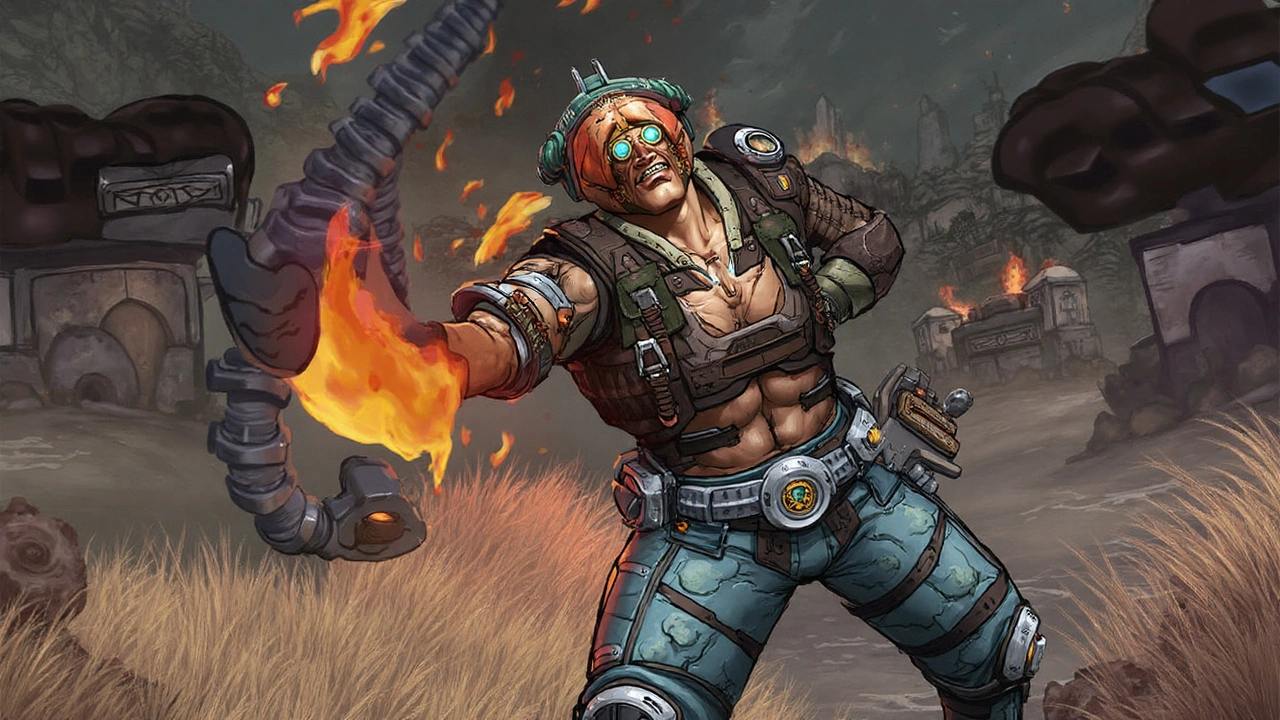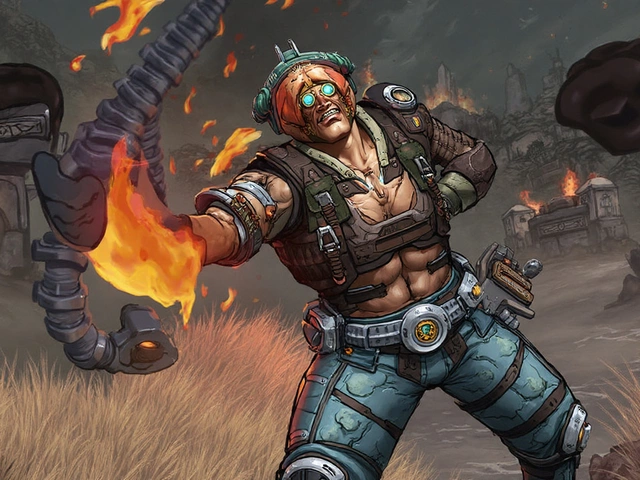The new Borderlands isn’t trying to out-joke its past. It’s trying to outplay it. Borderlands 4 launched with a bigger map, sharper shooting, and a tone that leans story-first rather than punchline-first. Early impressions from critics and creators point to a confident return, even as PC players flag performance hiccups the team will need to iron out.
Release timing, platforms, and what ships with the game
Gearbox Software and 2K rolled out the game worldwide with a staggered unlock. PC players got in first on September 11 at 9:00 a.m. PT (12:00 p.m. ET) through Steam and the Epic Games Store. Console players on PlayStation 5 and Xbox Series X/S unlocked at midnight local time on September 12, with Los Angeles effectively joining at 9:00 p.m. PT on September 11 due to time zones. A Nintendo Switch 2 version lands October 3, giving handheld players a short wait rather than a long one.
If you pre-ordered, your account should show the Gilded Glory Pack. That bundle is a cosmetic-forward bonus—character and weapon skins plus themed gear—meant to give early buyers a little flair out of the gate. The review embargo lifted September 11 at 8:00 a.m. ET (1:00 p.m. BST), letting coverage hit before the larger console audience logged in.
Worth noting for anyone planning a midnight session: regional unlocks mean your friends may be a few hours ahead or behind depending on platform and location. If your squad is split across PC and console, schedule accordingly. Cross-play specifics, save transfers, and performance modes weren’t the headline at launch, so expect the usual day-one uncertainty as the community compares notes.
Here are the key beats at a glance:
- PC launch: September 11 at 9:00 a.m. PT / 12:00 p.m. ET
- PS5 and Xbox Series X/S: September 12 at midnight local time (September 11 at 9:00 p.m. PT in Los Angeles)
- Nintendo Switch 2: October 3
- Pre-order bonus: Gilded Glory Pack (cosmetics and gear)
Kairos, the new Vault Hunters, and how the game plays differently
Borderlands 4’s story is set on Kairos, a hostile, hidden world with enough bad weather and worse wildlife to make Pandora look neighborly. The premise is simple and clean: four new Vault Hunters show up chasing fortune, get trapped by the forces that control the planet, and decide the only way out is to light a spark and build a resistance. Bandits and beasts are back, but mechanical threats take center stage as well—think heavy metal patrols that punish careless movement and reward clever routes.
The writing goes for grounded rather than relentless gag-reel. That’s not code for “humorless,” just a signal that jokes serve the plot instead of steering it. Reviewers who bounced off the toilet humor in Borderlands 3 say the new script is tighter and easier to follow. The cadence feels closer to what people loved about Borderlands 2: personality that doesn’t bulldoze the stakes.
Movement is the big change you notice in the first few minutes. Gliding lets you cross gaps or reposition without burning a skill cooldown. A fixed-point grapple turns map geometry into options—ledge to ledge, catwalk to rooftop—without breaking the first-person rhythm. Dodges give short bursts of invulnerability that feel built for avoiding explosive telegraphs, and the double jump supports both combat elevation and quick route correction. Together, the kit makes firefights read like arenas instead of hallways. You’re not just circling cover; you’re taking angles, diving off balconies, and dropping behind mini-bosses who expected you to stay on the floor.
Gearbox also built the world to match that mobility. The studio says area transitions are seamless, and that’s what testers have been reporting. No door-stops. No chugging as you load a new chunk of the map. You can sprint, slide, grapple, and glide from a side activity into a main mission without a fade-to-black. If you remember waiting through loading tiles between zones in older Borderlands games, the difference is obvious. Quest pacing is snappier, and exploration feels less like stop-and-go traffic.
Combat leans into that flow. Guns have punchier recoil patterns, enemies telegraph more clearly, and damage feedback is cleaner—useful when you’re deciding whether to risk a mid-air reload or bail out with a dodge. The series’ oddball gun variety is intact: elemental mashups, alt-fire modes, manufacturer quirks, the works. Loot tiers still push you to chase one more drop, but early feedback suggests fewer obvious duds and more viable “keeper” rolls in the first hours.
Buildcrafting is the glue. Action skills, passives, and gear perks mesh around your movement choices. If you’re the type to sail over a fight and collapse onto single targets, you’ll find perks that boost aerial damage or reward a perfect dodge. If you prefer support roles, there are crowd-control and team-amp paths that make co-op feel coordinated rather than chaotic. None of this reinvents the Borderlands formula; it tightens it so your choices matter on a minute-by-minute basis.
Co-op remains the heart of the game. You can play solo just fine—the campaign is tuned to be beatable without a team—but the four-player setup is where the new traversal shines. When one player grapples high to draw aggro and another slides wide to tag weak points, you feel the design click. The launch build encourages that coordination with encounter layouts that give you multiple lanes to the same objective. The community emphasis is clear: this is a live game in spirit, if not in name, and Gearbox wants squads forming early and often.
On the technical side, early reaction splits by platform. Testers praise the visuals—richer lighting, denser scenes, and cleaner outlines that preserve the series’ comic look without muddy edges. Gun feel and hit detection get consistent thumbs up. PC performance, though, has been spotty for some players. Reports mention frame drops and inconsistent pacing on certain setups. That’s not a new story for big PC launches, but it is a priority to watch in the first round of patches. Console performance has drawn fewer complaints so far, though we’ll need a larger sample size as more players hit late-game areas.
The reception so far reads like a course correction. Critics who stuck with Borderlands 3 for the loot loop but groaned at the writing are calling this a cleaner package. A few even predict scorelines chasing Borderlands 2’s high-water mark. That’s a strong first week narrative for Gearbox, especially after the recent Borderlands movie stumbled with audiences. The studio has framed this entry as the biggest and most open-ended in the series, and on day one it feels like they’ve backed up that promise with scale, systems, and a less polarizing voice.
What don’t we know yet? Endgame depth is the big question. Borderlands has a history of horde arenas, raid-style bosses, and DLC campaigns that stretch builds in new directions. The specifics for this game’s post-launch cadence, seasonal events, or expansion plans weren’t front and center at release. The team’s track record says support will follow, but the shape of it—and how the new movement feeds into late-game chase—will define whether the community sticks around for months or years.
For new players, the entry ramp looks friendly. Early missions teach traversal without hand-holding, the first minibosses force you to dodge rather than face-tank, and loot progression is brisk enough to keep you swapping gear without drowning you in menus. If you’re returning after years away, the biggest adjustment is verticality. Think of every fight in layers—ground control, mid-level flanks, and rooftop risk-reward—then build around the layer you prefer. The game pays you for picking a lane and playing to it.
As always, co-op etiquette matters. Call targets. Ping ammo or health chests before snatching them. If your friend whiffs a jump and eats a revive timer, glance at the minimap before chasing a kill streak. The new movement can either make you a hero or strand you on the wrong roof. Good squads stay in sightlines and share cooldown windows so damage spikes land together.
One more thing to keep an eye on: how seamless streaming affects quest design later in the game. When a world has no hard gates between areas, designers can hide optional objectives in clever places and let you stumble into them. Expect more “oh, what’s that?” moments off the critical path. The test will be whether those diversions feel meaningful—unique loot, story beats, or new enemy types—or just filler you sprint past on the way to the next main mission checkpoint.
Even with the rough edges on PC, the early story is clear. Borderlands 4 refocuses the series on momentum: faster movement, faster transitions, and a script that pushes the plot instead of pausing for every punchline. It looks and sounds like Borderlands, but it plays with a new tempo. If Gearbox hits a steady patch cadence and lays out a strong endgame, Kairos could be where the franchise finds its stride again.





